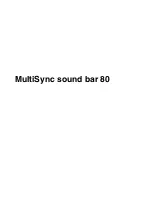
- SS-HQ1 Application Notes -
Ver.1.0.0 January 7, 2005
165
11.2.4. Dynamic detection and compensation function
Description of operations
This function holds a blemish address for each frame. It compares this address against the blemish address
from N fields earlier, and if they match, a blemish is recognized. The blemish address held for each frame is an
address with the highest blemish level among pixels which are at or above the threshold level when compared
to two pixels of the same color filter adjacent in the horizontal direction, while the pixels surrounding the target
pixel are at or below the dark level reference value during the normal imaging state. (This excludes blemish
addresses that have already been detected.)
Detection performs in the normal imaging state. Thus, false detection may take place in dynamic detection.
However, there is also a function for releasing such false blemishes. With this function, false blemishes up to a
level set by the user can be released.
The diagram below shows an image of the dynamic detection operation. Determination data are the target
pixel’s level and the levels of the peripheral (horizontal and vertical) pixels. In reality, CCD performs 2-pixel
addition read-out. The process of 1-pixel read-out is omitted from this explanation.
Detection operation (1)
As shown in
, the peripheral pixel levels are checked to determine whether or not they are at or
below the dark level reference value.
Peripheral pixels can be selected using the parameter DETSPEC. The dark level reference value can be set
using the parameter DARKREF/M.
Fig 11.2-5 Dynamic detection overview (1)
Blemish Pixel and Circumference Pixel Image
Dark level
reference value
(DARKREFL/M)
Circumferences pixels
MAX : 10 pixels
(DETSPEC)
Target Pixel
















































